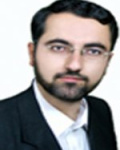| نویسندگان | مهدی محمدی مهر-هادی محمدی هویه-حسن افشاری-محمدرضا سالارکیا |
|---|
| نشریه | MECH ADV MATER STRUC |
|---|
| تاریخ انتشار | 0-0-01 |
|---|
| نوع نشریه | الکترونیکی |
|---|
| نمایه نشریه | ISI ,SCOPUS |
|---|
چکیده مقاله
Size-dependent effect on free vibration of double-bonded isotropic piezoelectric Timoshenko micro-beam using strain gradient and surface stress elasticity theories under initial stress is presented. This article is developed for isotropic piezoelectric material. Due to the high surface-to-volume ratio, surface stress has important role at micro-and nanoscale materials. Thus Gurtin–Murdoch continuum mechanic approach is used. Governing equations of motion are derived by Hamilton’s principle and solved by DQM. The effects of pre-stress load, surface residual stress, surface mass density, surface piezoelectric, Young’s modulus of surface layer, three material length scale parameters, thickness to material length scale parameter ratio, various boundary conditions, and two elastic foundation coefficients are investigated. It is concluded that the effect of pre-stress load in greater mode is negligible for higher aspect ratio and this effect is similar to lower aspect ratios. Also, the size-dependent effect on the dimensionless natural frequency for SGT is higher than that for MCST and CT which is due to increasing stiffness of Timoshenko micro-beam model. Moreover, the results show that dimensionless natural frequency affects more by considering the material length scale parameters with respect to surface effect. The results are compared with the obtained results by other literatures that have a good agreement between them. It is concluded that the amplitude of the transverse displacements (w0 ) for MB is more than the transverse displacements (w1) for PMB. On the other hands, using piezoelectric layer for PMB, the amplitude of the transverse displacements (w1) reduces considerable with respect to MB that this effect leads to increase the stiffness of microbeam, and stability of micro structures. With considering piezoelectric layer, the obtained results can be used to control the amplitude and vibration of micro structures, prevent the resonance phenomenon, design smart structures, and employed for MEMS and NEMS.
